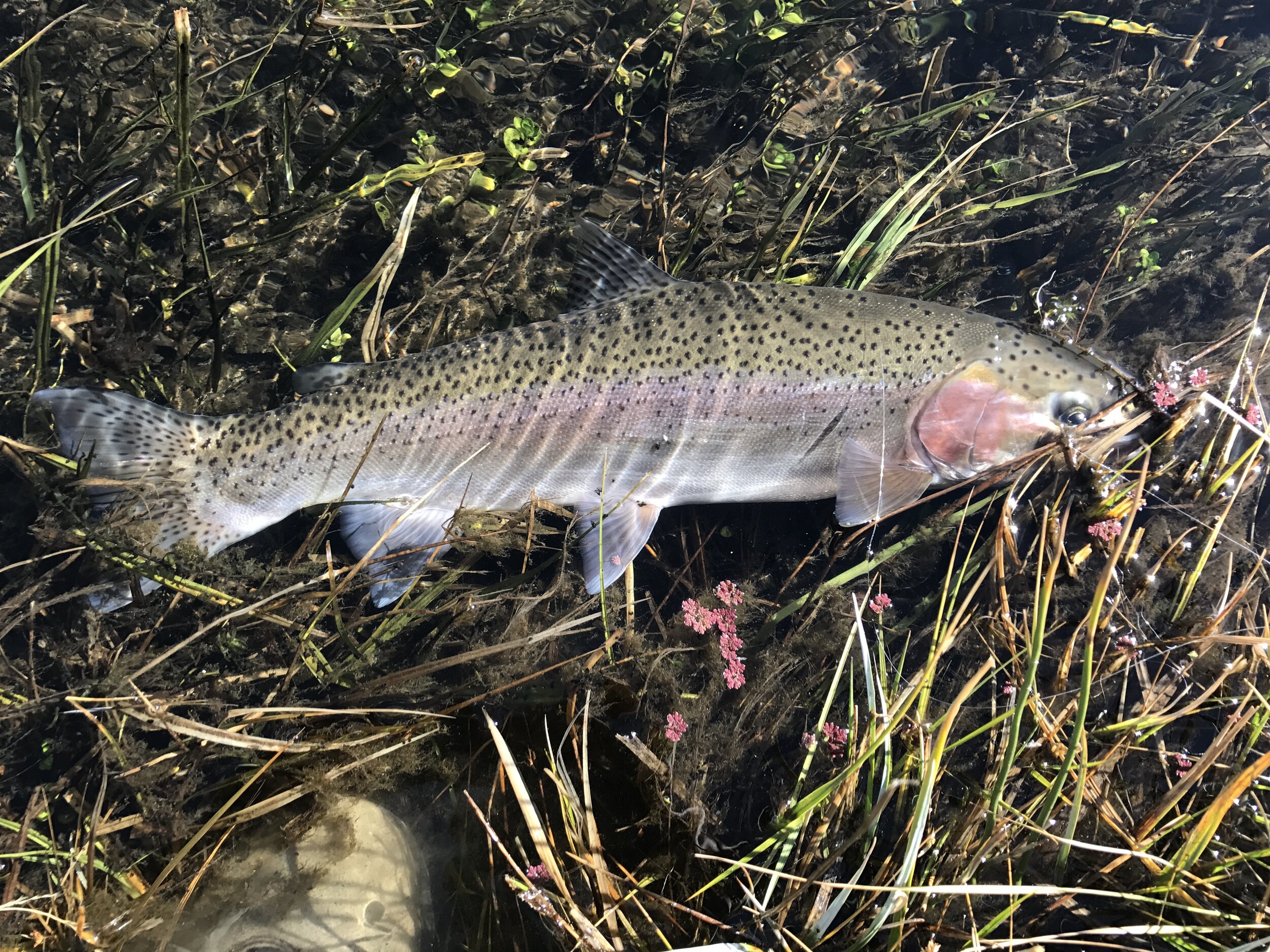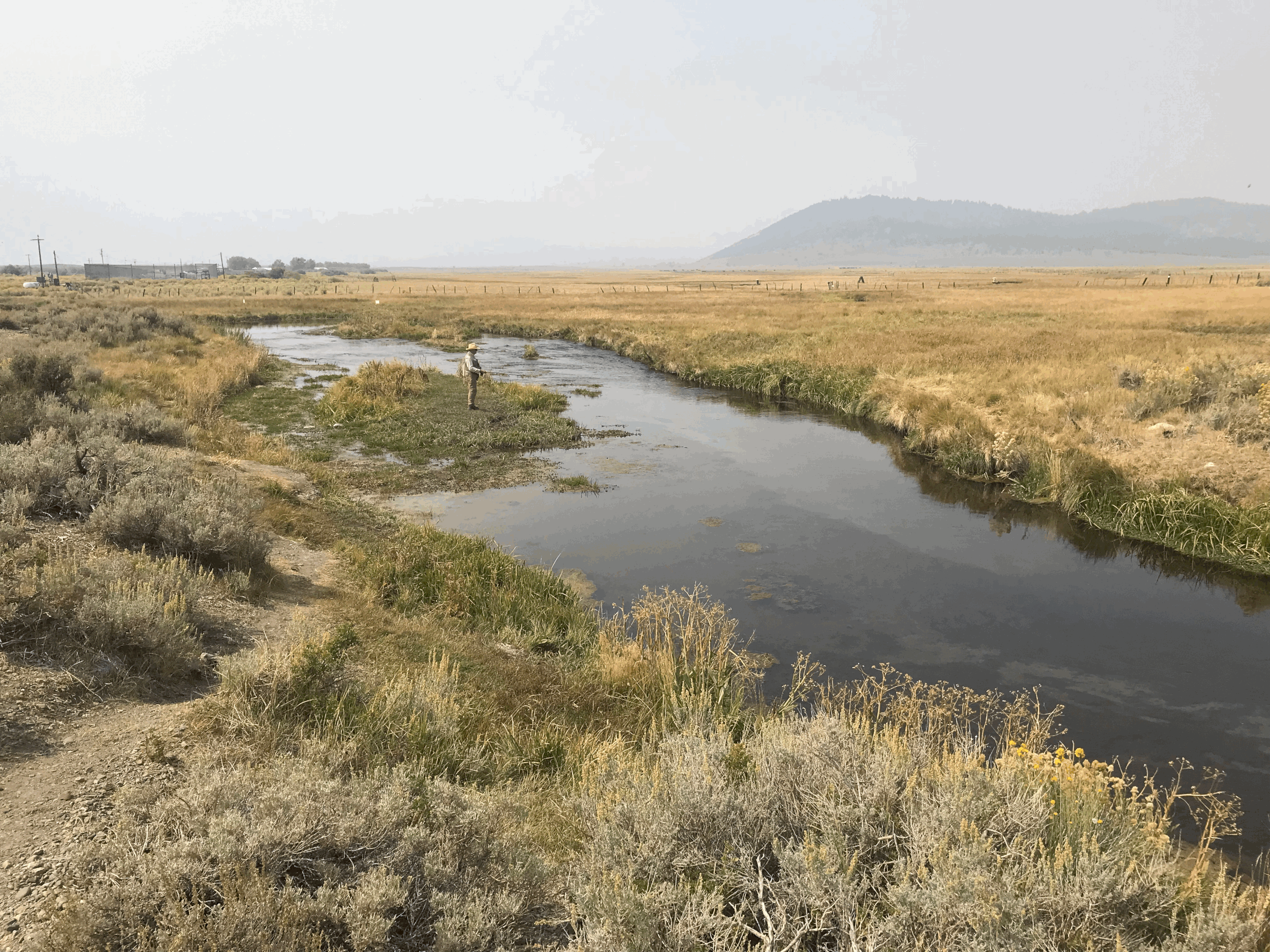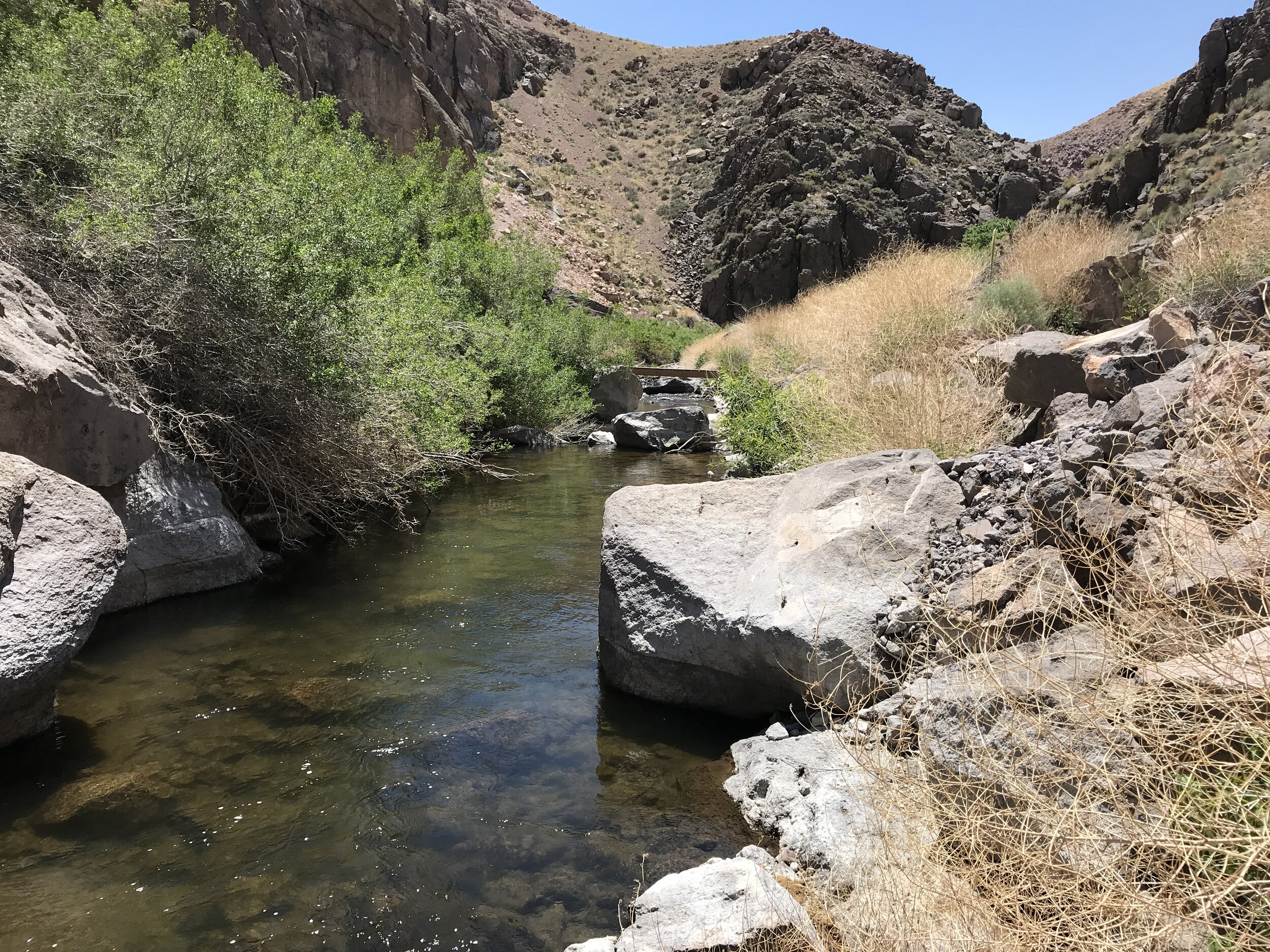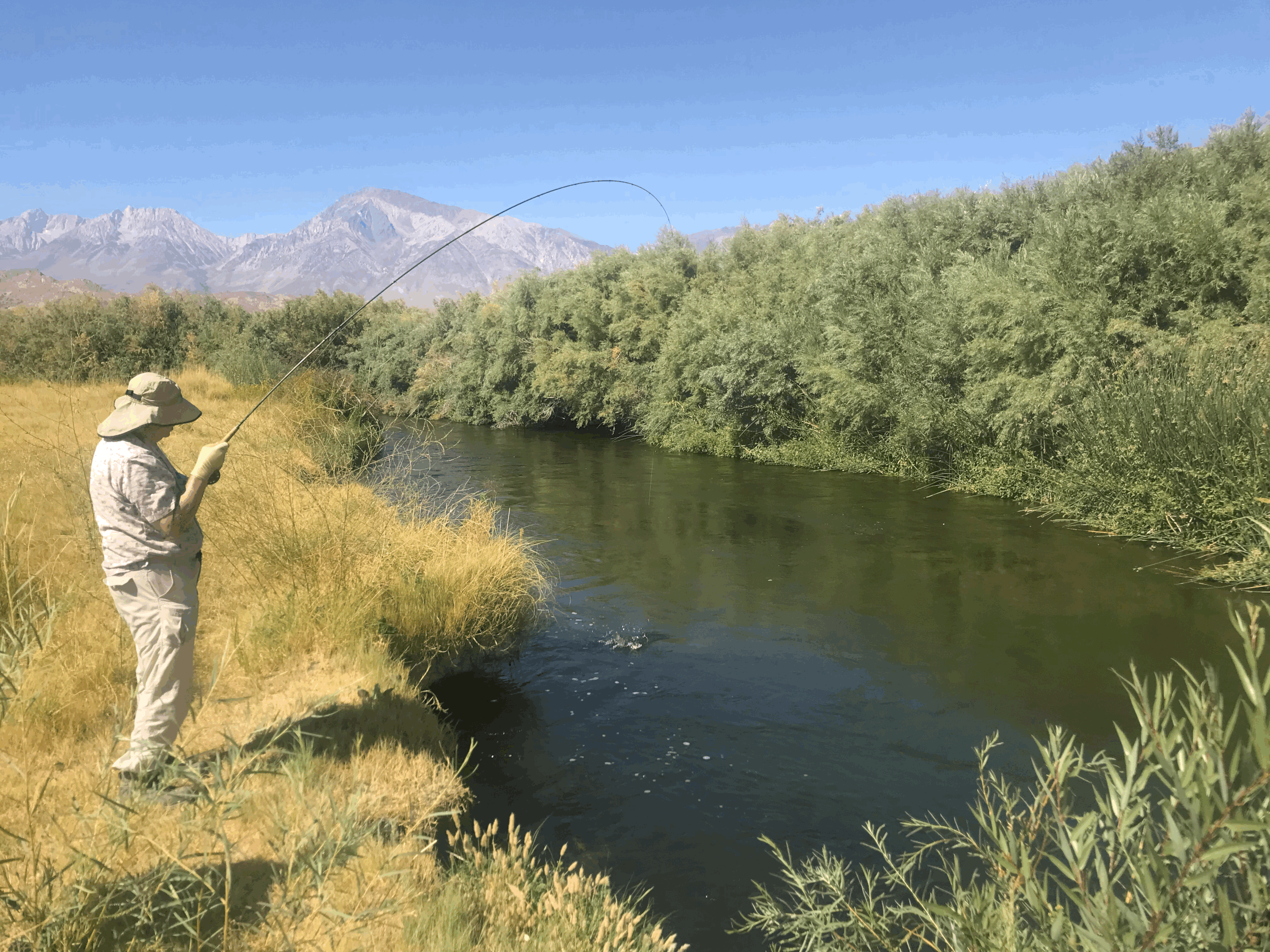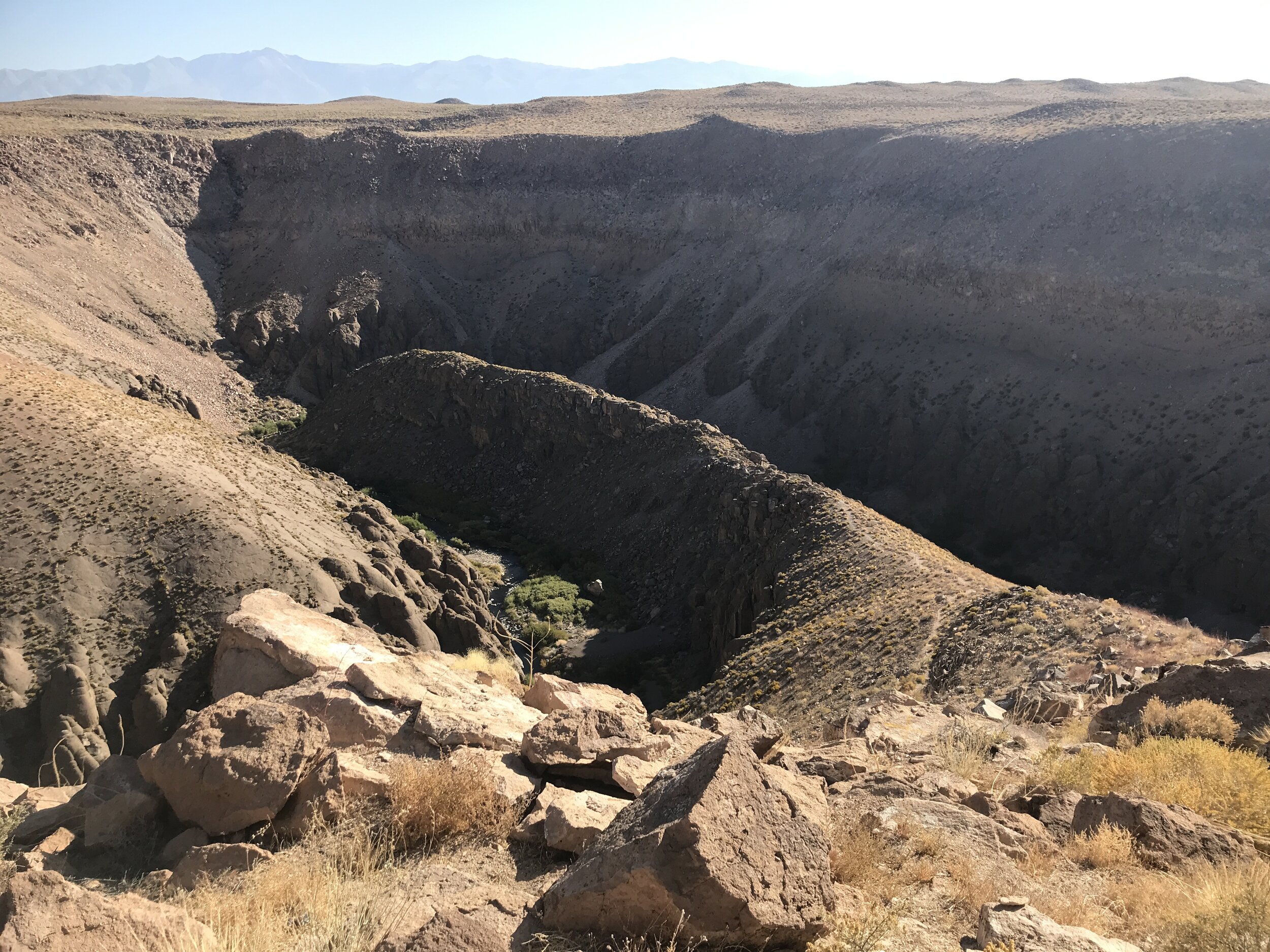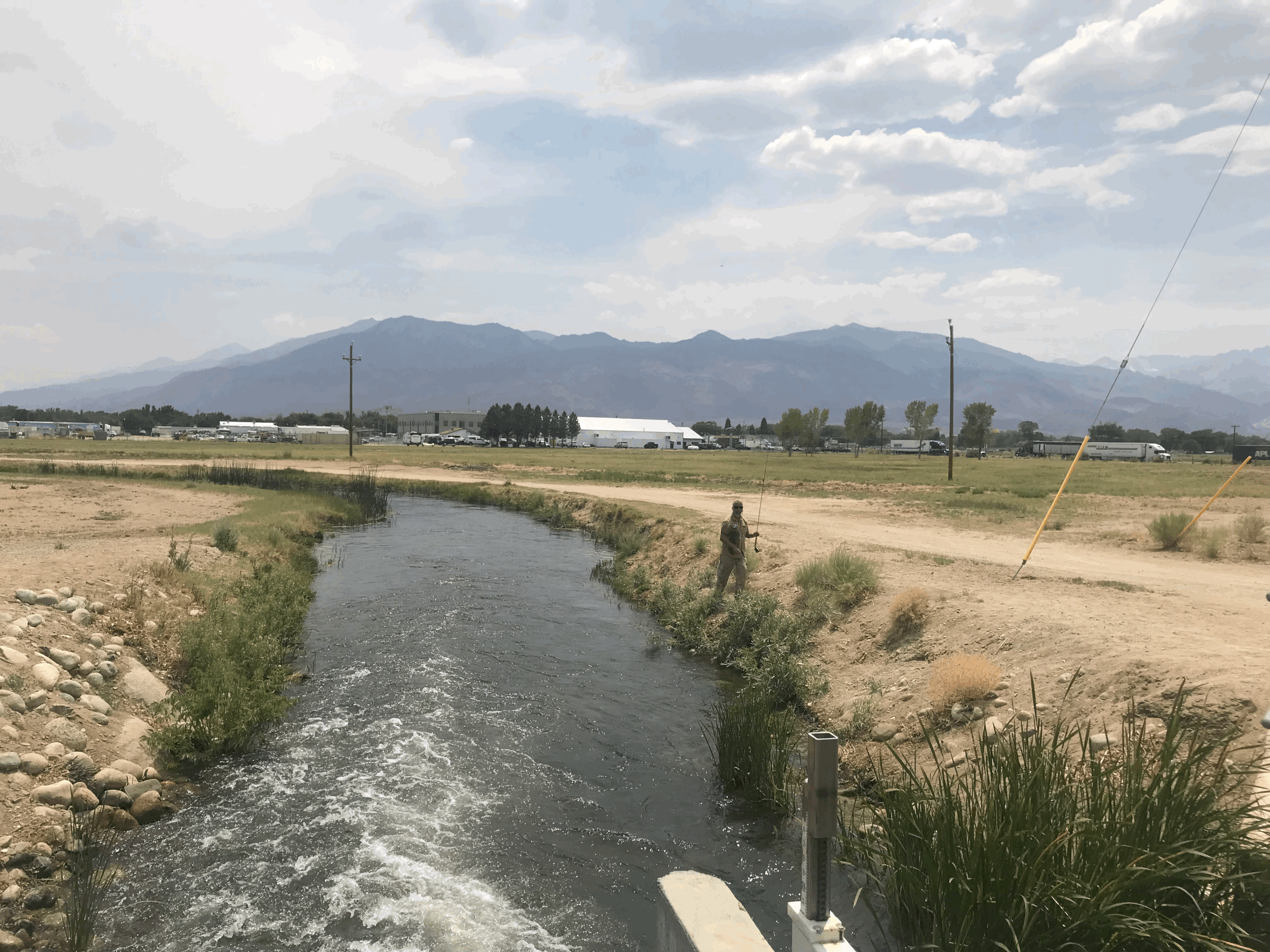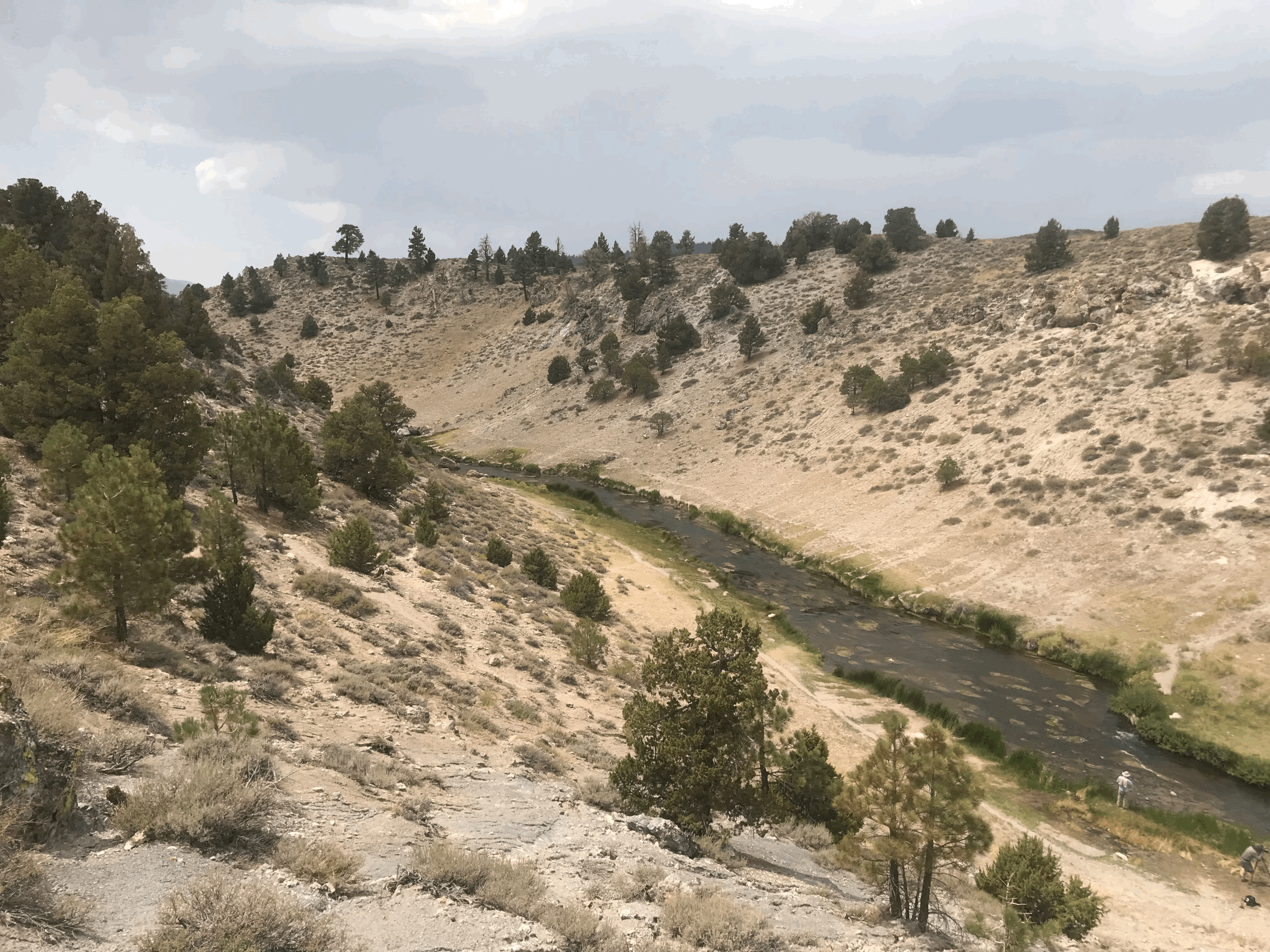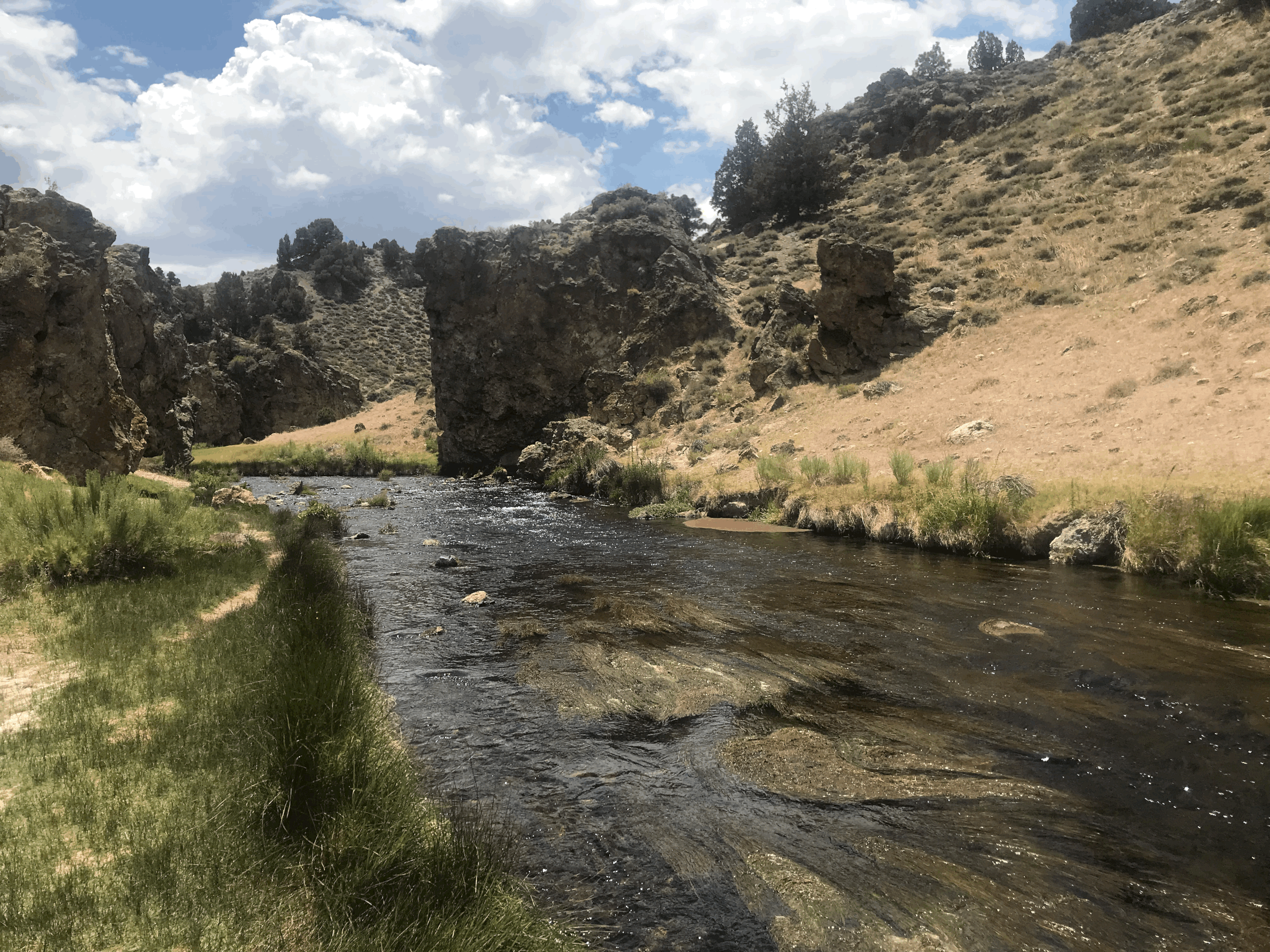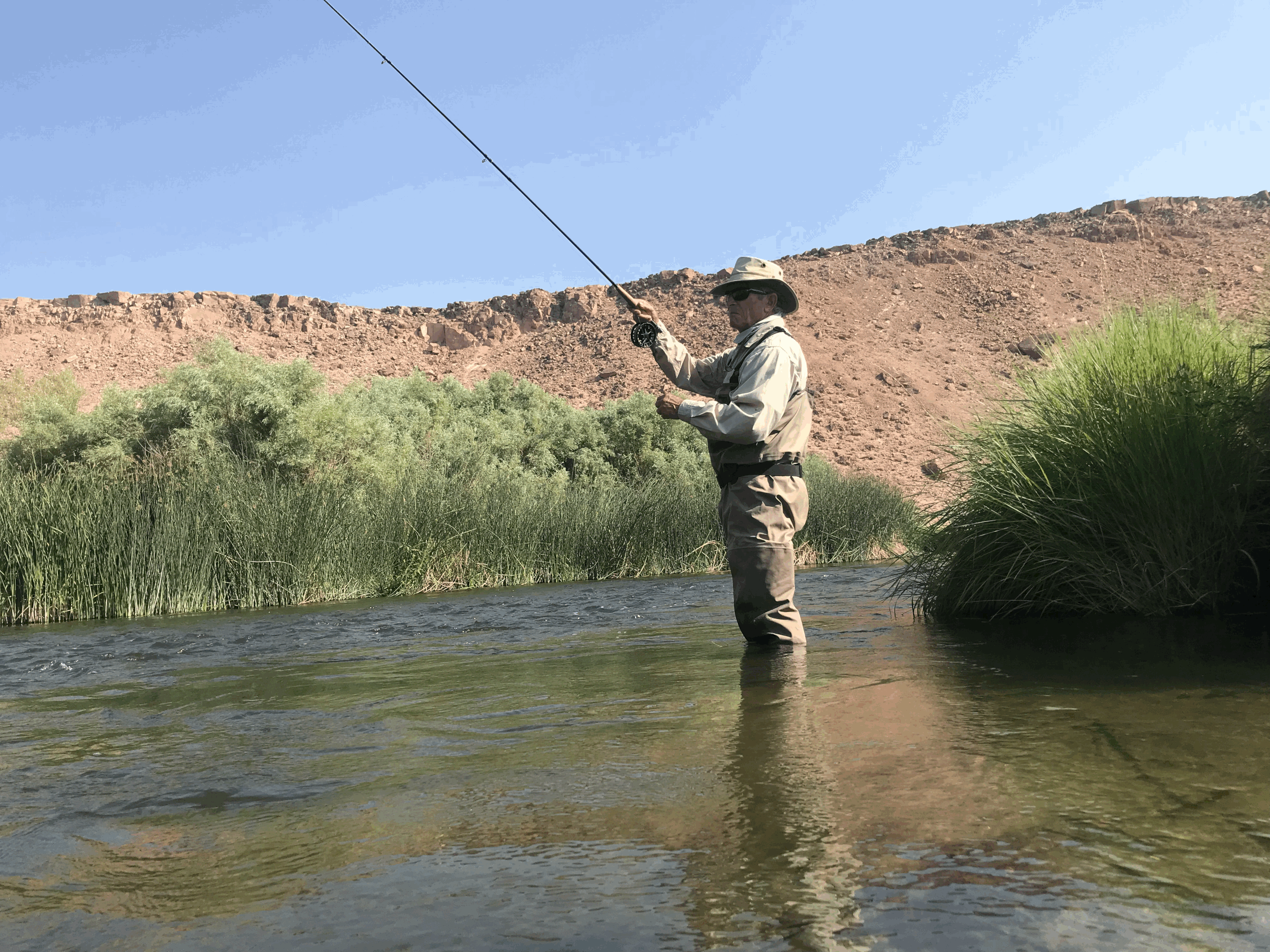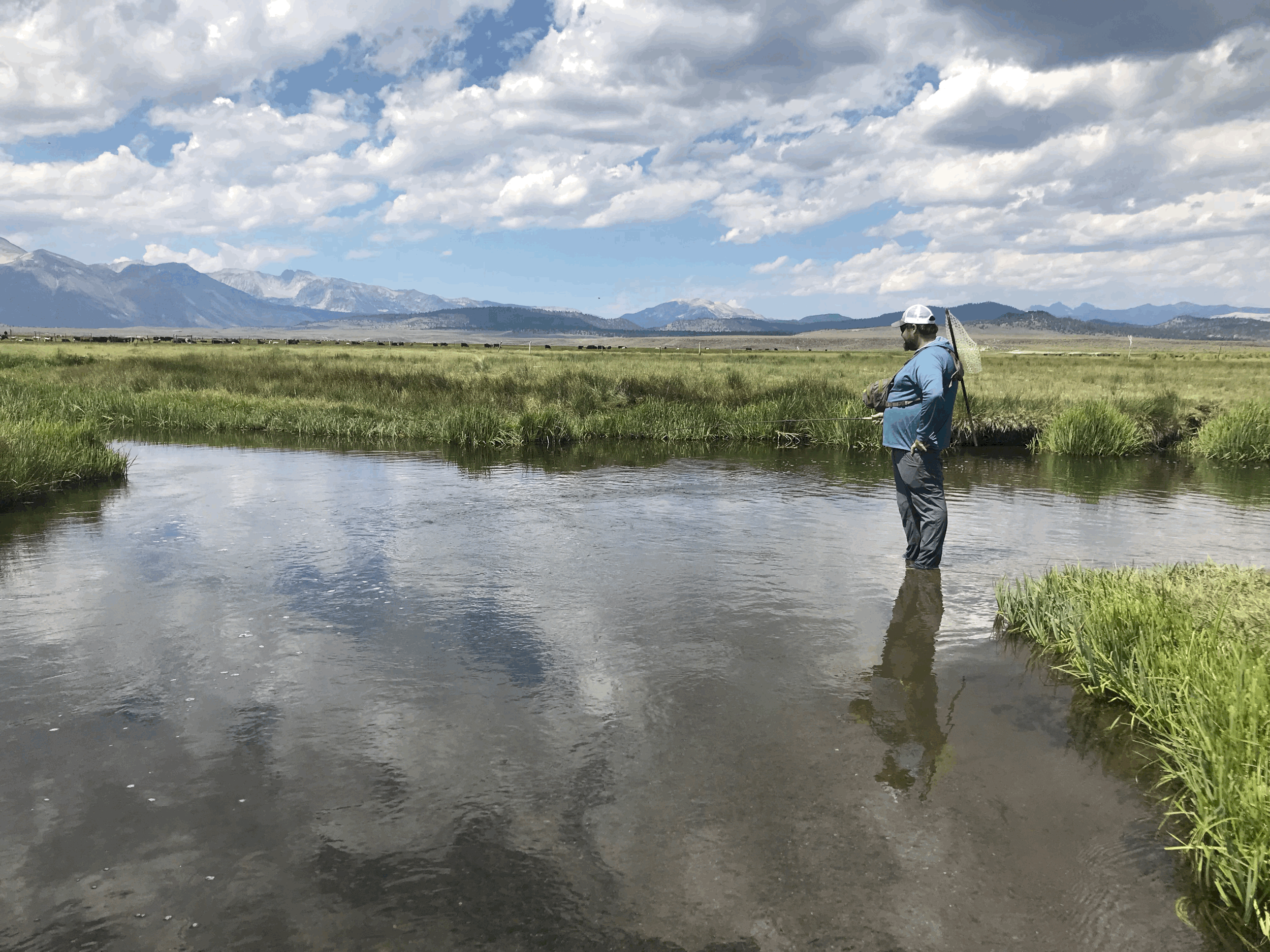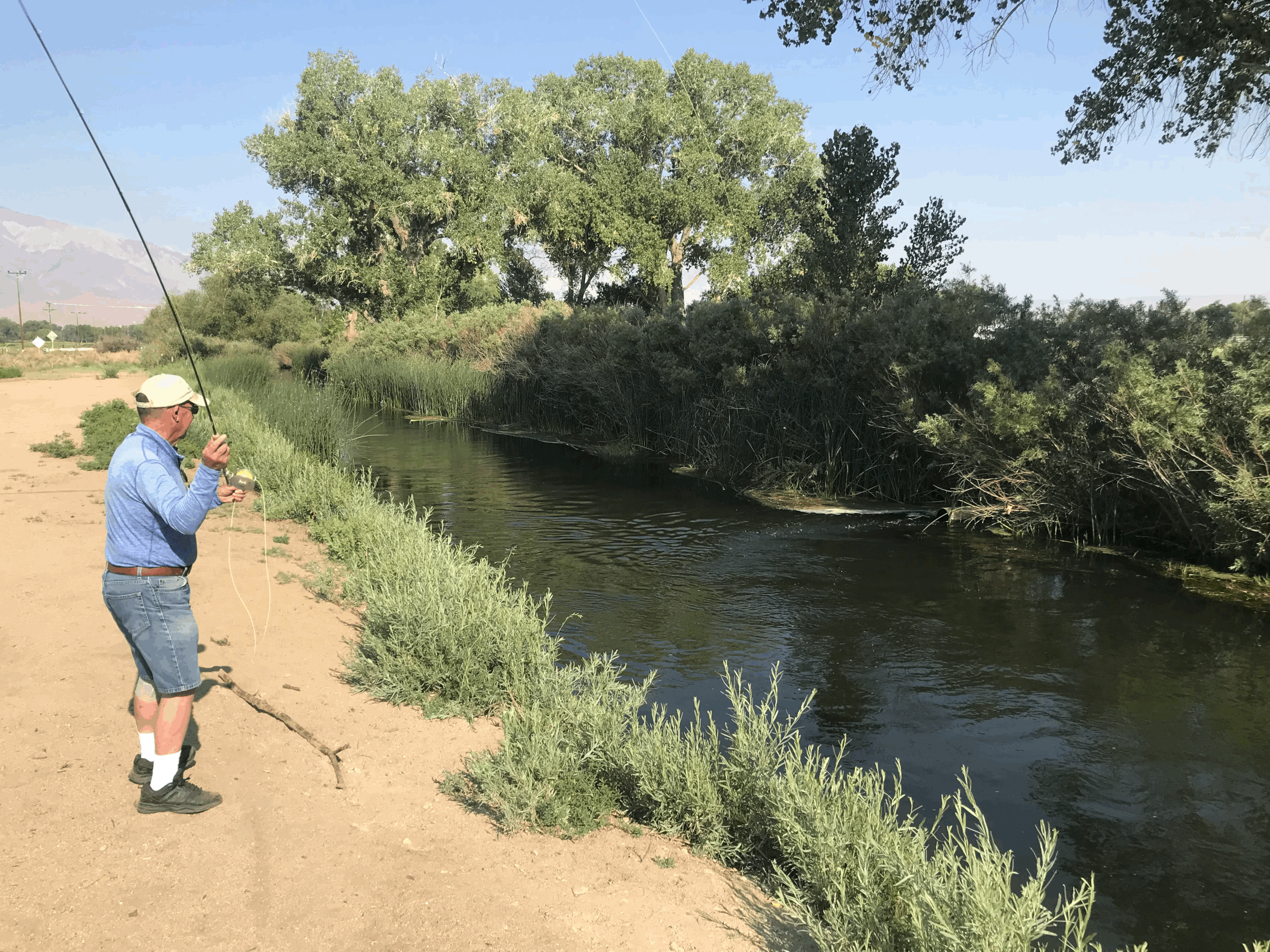Forest Service lands closure was lifted on Thursday at midnight. Forest Service lands are getting used by locals and guests alike.
The spring of wind turned to the summer of heat. We are supposed to cool off starting next week to normal September temperatures. Trout on Inyo National Forest lands have had almost two weeks of no fishing pressure. If you’re lucky enough to get up this weekend to fish you will find trout willing to take a well presented fly. This was true for several fly fishers that fly fished Hot Creek this morning. The 15th of September to the 15th of October is my favorite time of the year to be fly fishing in the Eastern Sierra. The fish seem to know that summer is coming to a close and go on a feeding frenzy. This is a great time to chase trophy trout in the lakes and the tributaries to those lakes.
Trophy trout are moving out of the lakes and into the tributaries offering fly fishers a chance to land a trophy trout.
Lower Owens River Wild Trout Section:
Flushing flows in the Owens River Gorge are completed and as of Thursday September 16 flows in the lower Owens River are at winter flows of 100 CFS. These flows are almost too low and allows fly fishers uninhibited access to the river and congregates the fish in the deeper holes. Look for trico and black fly hatches in the mornings. Nymphing will be the most productive method of fly fishing. Caddis continue to offer evening fly fishing opportunities for fly fishers looking for a spot to finish out their day of fly fishing. Fly fish with elk hair caddis, X-caddis, California mosquitos, gold ribbed hare’s ears, pheasant tail nymphs, and burlap caddis.
Getting ready to land a wild brown trout when the flows were at 225 in the catch and release section of the lower Owens River.
Lower Owens River Gorge Section:
Los Angeles Department of Water and Power in conjunction with California Department of Fish and Wildlife completed flushing flows in the Owens River Gorge. I don’t start fishing the Owens River Gorge until October. This will give this area a couple of weeks to stabilize after the flushing flows. With temperatures back in the 80’s this will become a spot to explore with the fly rod all day long.
Flushing flows create habitat for big browns like this one taken while elector shocking with CDFW.
Hot Creek:
Interpretive Site:
First day Hot Creek opened up after the Inyo National Forest closure and trico spinners provided lots of opportunities for fly fishers fishing with size 24 trico spinners. The blue wing olive hatch was sparse and only provided a few fish. There were half a dozen fly fishers working the creek from 8:30 A.M. to noon. Caddis were sparse on the river and did not provide much opportunity for fly fishers. Tippets down to 6X and drag free drifts were needed to fool the wary trout of the interpretive site.
A smoky day on the interpretive site of Hot Creek the first day the Inyo National Forest opened after the closure.
Hot Creek Canyon Section:
The water in the canyon section of Hot Creek is steeper with quicker moving water causing the trout to react to the fly as it passes by them. This makes it easier for the fly fisher to fool the trout. Unlike the slower sections of Hot Creek where the trout can discern the littlest of mistakes in the cast or the fly pattern. Fly fishing in the late morning to early afternoon is tough as few insects are rising. Fishing a size 20 blue wing olive parachute fooled a few wild browns and rainbows. The morning caddis hatch was weak at best.
Upper Owens River:
Above Benton Crossing Bridge:
Euro nymphing with bigger nymphs is producing a few trophy trout for fly fishers willing to work hard for their fish. Covering lots of deep holes and deep runs will produce a few trophy trout willing to take size 12 gold ribbed hare’s ears, stoner nymphs, and green/gold wire Prince nymphs. Trico hatch in the morning is offering good dry fly action for wild rainbow and brown trout to 12 inches. Caddis activity has been sparse in the mornings, but better in the evenings. The next 30 days is my favorite time to be fishing on the upper Owens River.
Working nymphs in the deeper runs and pools is producing a few trophy trout.
Bishop Creek Canal Behind the Ford Dealer:
Trico mayflies in the morning continue to offer fly fishers great dry fly fishing opportunities. A drag free drift is necessary to fool the wild and stocked trout. The fish are keying in on the spinner fall and a size 24 hackle tip spinner with a drag free drift is fooling the trout. After the trico hatch is a good time to fish a size 16 bead head flash back gold ribbed hare’s ear three feet under a size 16 parachute Adams. There are a few grass hoppers lurking around the banks offering an opportunity to throw hopper patterns in the afternoon.
A wild brown trout from Bishop Creek Canal is fooled by a size 24 hackle tip trico spinner fished with a drag free drift.
San Joaquin River:
Opened to the public on Thursday September 16. No fish report yet as I haven’t fly fished the San Joaquin River since it opened.


